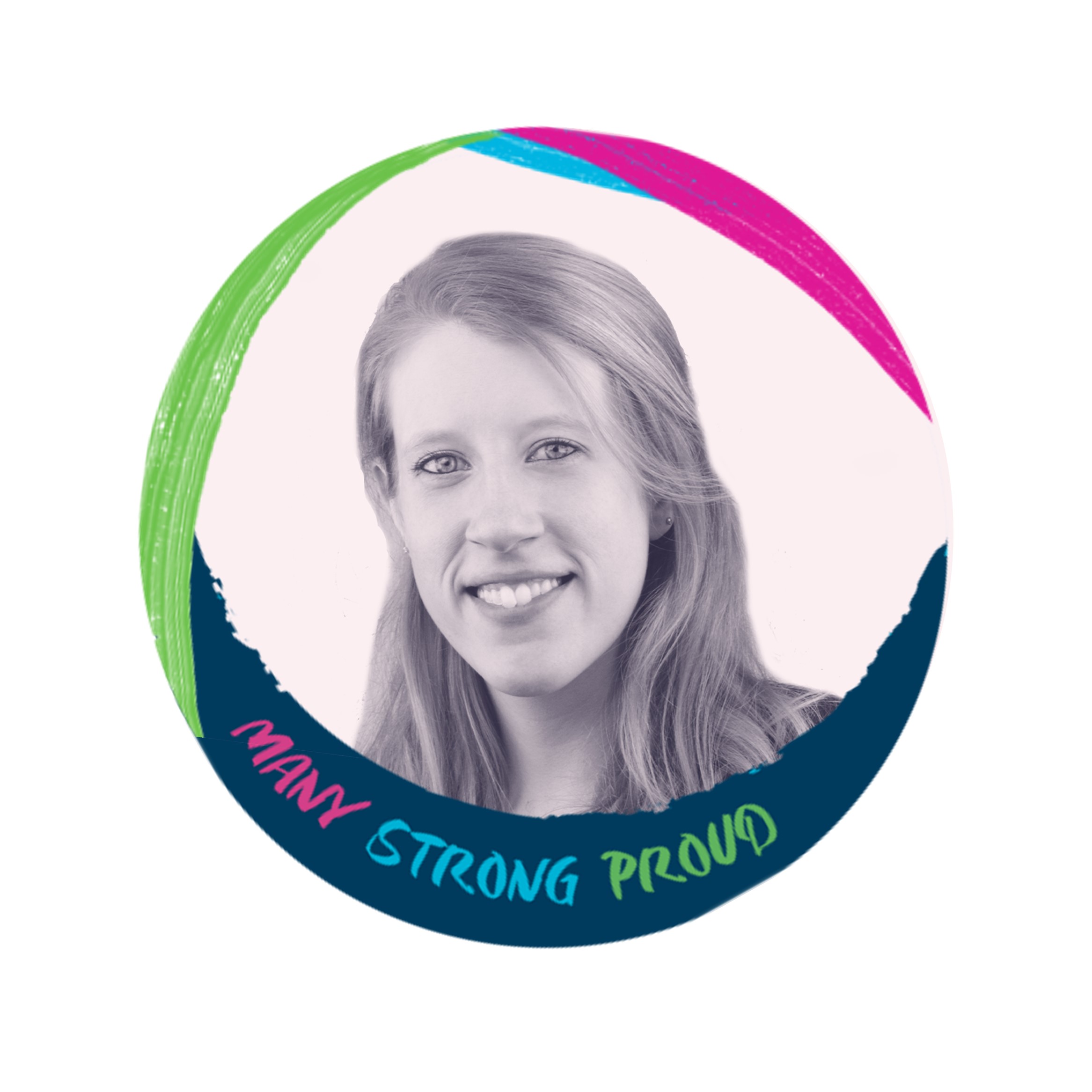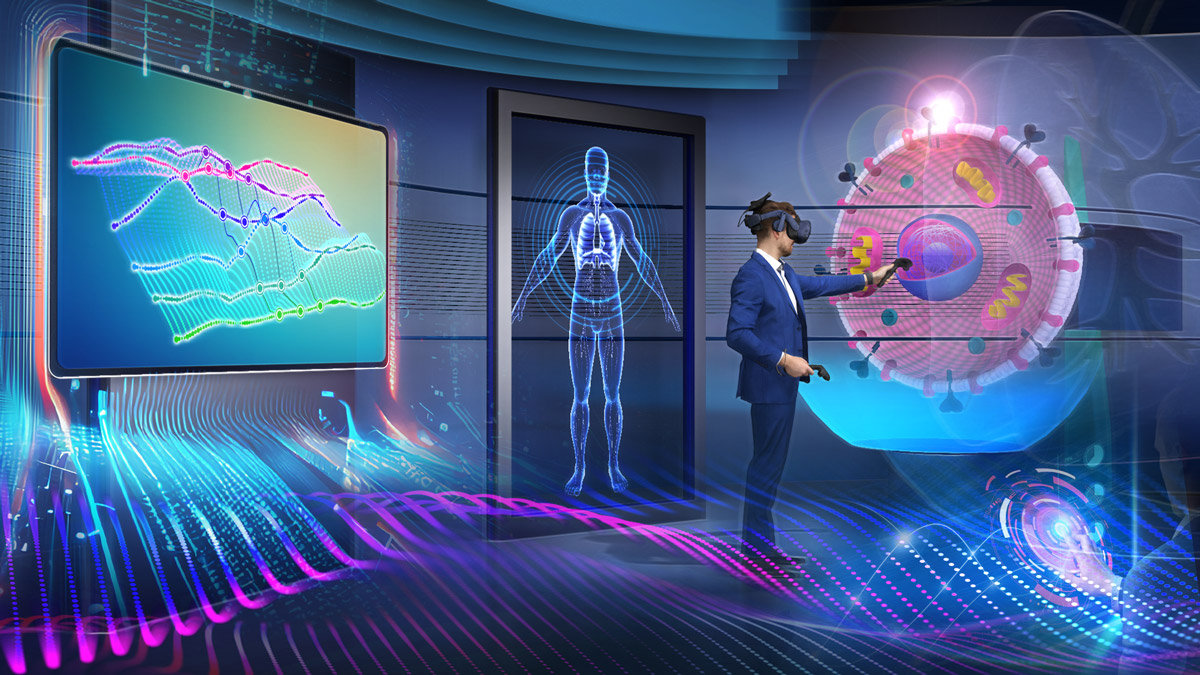
Precision versus personalised medicine – is there a difference?
14 November 2022
Rare diseases – not as rare as you think
23 February 2023Authors: Matt Kay, Visual Experience Director and Henry Madsen, Visual Experience Lead
‘… instead of a PDF we’d love to have some AR, VR and MR.
And when you are finished can you pop it into the Metaverse for us?’
Can the visual experience process help us meet client needs in the new wild west of the digital transformation landscape?
The answer is, yes. Visual Experience (VX) is a cross-discipline creative approach to bridge the gap between digital, visual design and motion projects, using immersive design solutions – part of Sciterion’s drive for creative, digital and business agility.
There is a seismic shift happening in the way commercial hybrid events and campaigns are being created. High street brands are adapting to the impact of rapidly emerging technology and changing consumer habits using experiential visual design and its creative tool kit.
Transformation in medical education is understandably slower, mainly due to limitations of approval systems and the difference between promotional and nonpromotional outputs. But it is coming, and fast.
We can see many tech acronyms and abbreviations relating to digital production – AR, VR, MR, XR, META, HOLO to name a few – popping up in RFPs. However, without a clear understanding of VX, we are seeing that these requests often do not have a direct connection to the actual educational needs of the end user. It is a complex landscape, one which understandably our clients want to leverage, and specialist teams such as ours can advise the best solutions that will have a lasting impact.
ENHANCING EDUCATION
Our creative approach of VX in medical education is to explore how visual media can truly enrich an educational journey in terms of engagement, interactivity, and retention. This may be educational in the academic sense of reaching learning goals, or it could be patient-facing materials communicating data, lifestyle information, or medical device usage. The use of visual media can add depth and richness to a healthcare professional or patient experience, making the interaction memorable and easily applicable to clinical practice.

Despite the slower uptake compared to commercial settings, the digital native generation comprise a significant part of the audience for medical education materials, and even late adopters are becoming more receptive to technology such as AR. For example, visualising a medical device using a familiar device like a phone is easy, immediately engaging and informative. By avoiding gimmicks and using technology as the ‘reason’ to engage, we develop a visual narrative that leads the user to exciting content.
IMMERSIVE JOURNEYS
In a recent case study, a complex Mode of Disease (MOD) requires investigation by delegates to really understand what is happening and the detailed descriptive material that goes with it. We can treat the whole experience of working through that material as a non-linear immersive journey. Touch points of dense material can be transitioned into highly visual animations, with non-linear navigation to allow for exploration. This not only allows for different paces to digest the material in bite size chunks, and shifting from reading to watching, it also creates flexibility for different types of learners to navigate the material in their own way.
The explorative side of the experience can then lead into 3D world objects. For example, a virtual 360-degree educational hub that houses the assets for a truly immersive exploration. Why not dive into an MOD in a virtual way, seeing a cell interaction as if you are standing there on the lipid layer looking around at the cell layer like a landscape!
This learning experience then moves away from gimmicks and marketing, and into the realms of true engagement, with increased linger-time and retention.
CASCADING THE CREATIVE
In the same way a brand creates a guideline to connect different marketing channels for the use of branded materials, VX services can direct a cascade of assets that run through a variety of hybrid materials. Graphic, illustrative and CGI assets can be developed to create non-linear narratives that provide a consistent thread throughout an entire suite of materials, event sessions, and activations, connecting in-person delegates with the virtual audience. The golden rule is that the technical deployment of assets is driven by the creative strategy and medical narrative, not the other way round!
As VX specialists, we develop creative assets in a flexible, and reusable way. We plan the use of objects and animations throughout the project in different ways such as 2D, 3D and 4D. In this way, we can explore and research what kind of narrative can unfold for the user and anticipate how different users may digest and engage with this material. This generates a suite of assets and materials that can evolve as the campaign develops, to create a repository of adaptable creative media.

SCIENCE MEETS ART
When researching a new medical education project, collaboration is key. We work closely with medical writers and experts to get to the core of what is required by the end user. A visual audit of existing material is always key and our initial focus is on ‘ideation and artistry’, making sure that ‘form follows function’, as architects say. We need to ensure the form that the end solution takes really does align to the function of the materials’ educational purpose.
“The mind is an umbrella – it functions best when open.”
Walter Gropius
By treating the initial ideation stage as an artistic endeavour, it allows us to really connect with the emotive side of the materials we produce, thinking about how this experience or suite of materials could have real meaning for a patient’s life, for example. Not only do we want health professionals to experience information in new and innovative ways, the engagement needs to be compelling and elevate the science, so that it truly speaks to our audience. Our ultimate goal is to make an emotional connection to the visual experiences we create and then, undoubtedly, our audience will too.
“In art, new ways of seeing mean new ways of feeling; you can’t divorce the two, as, we are now aware, you cannot have time without space and space without time.”
David Hockney

